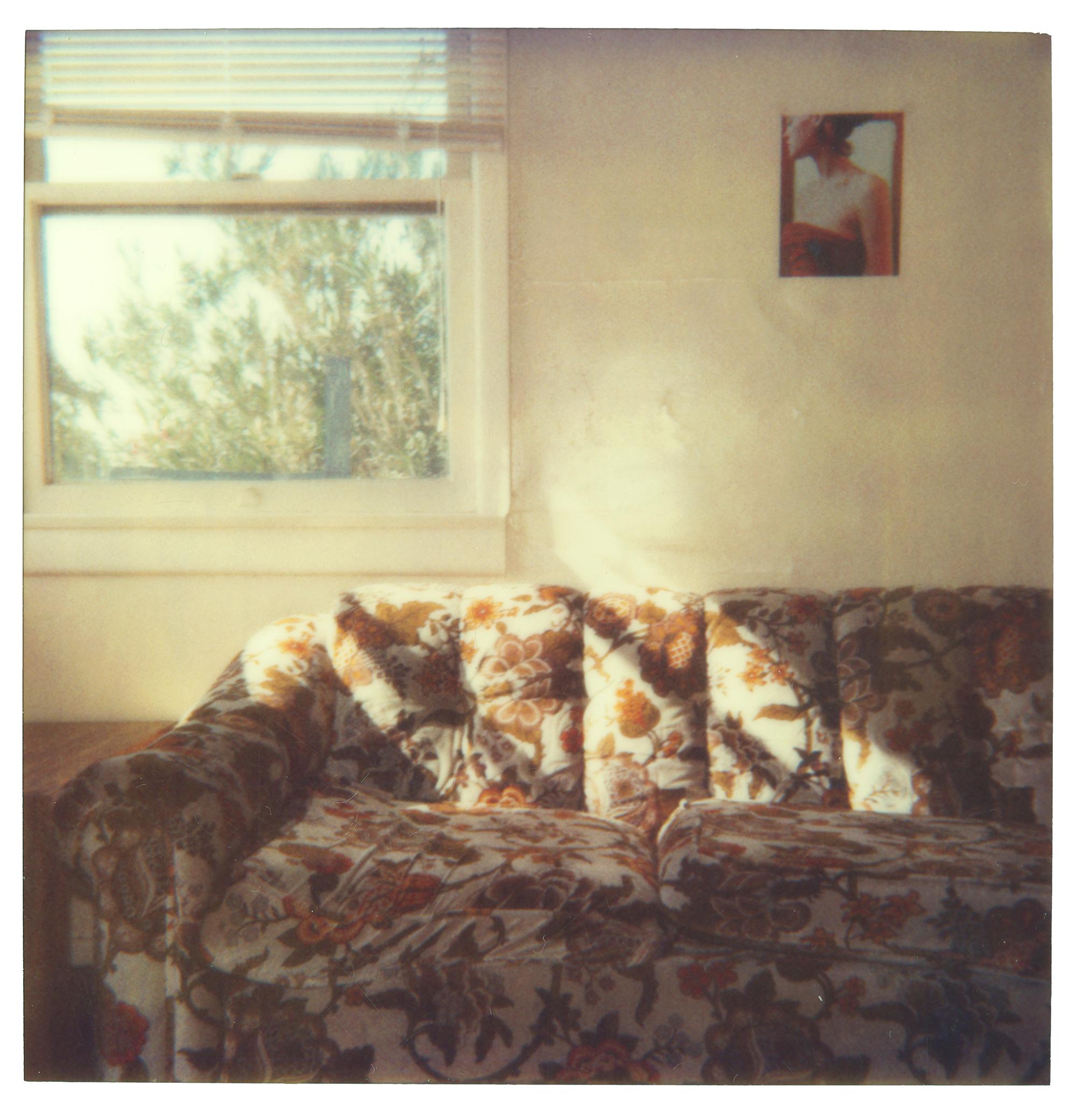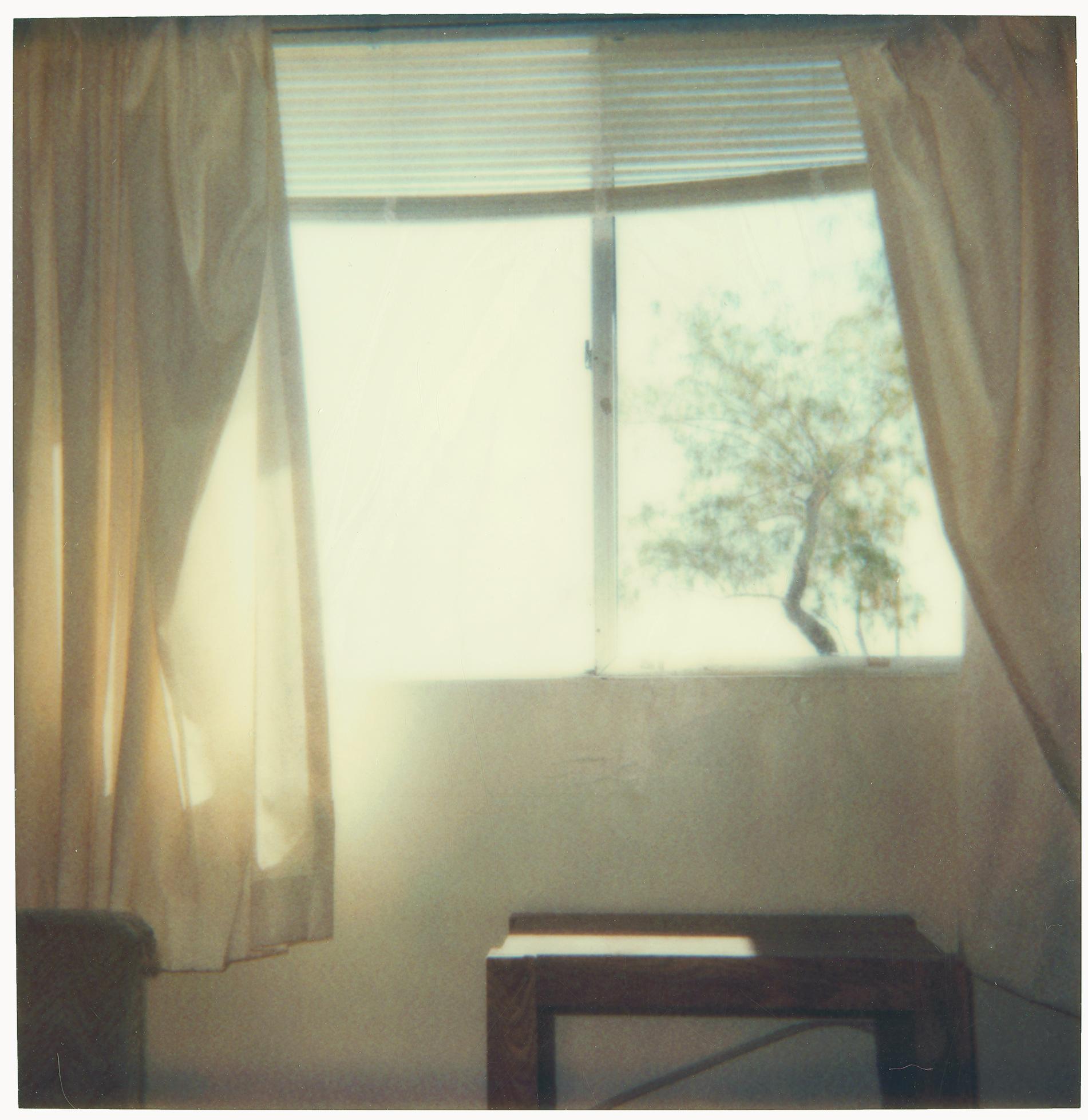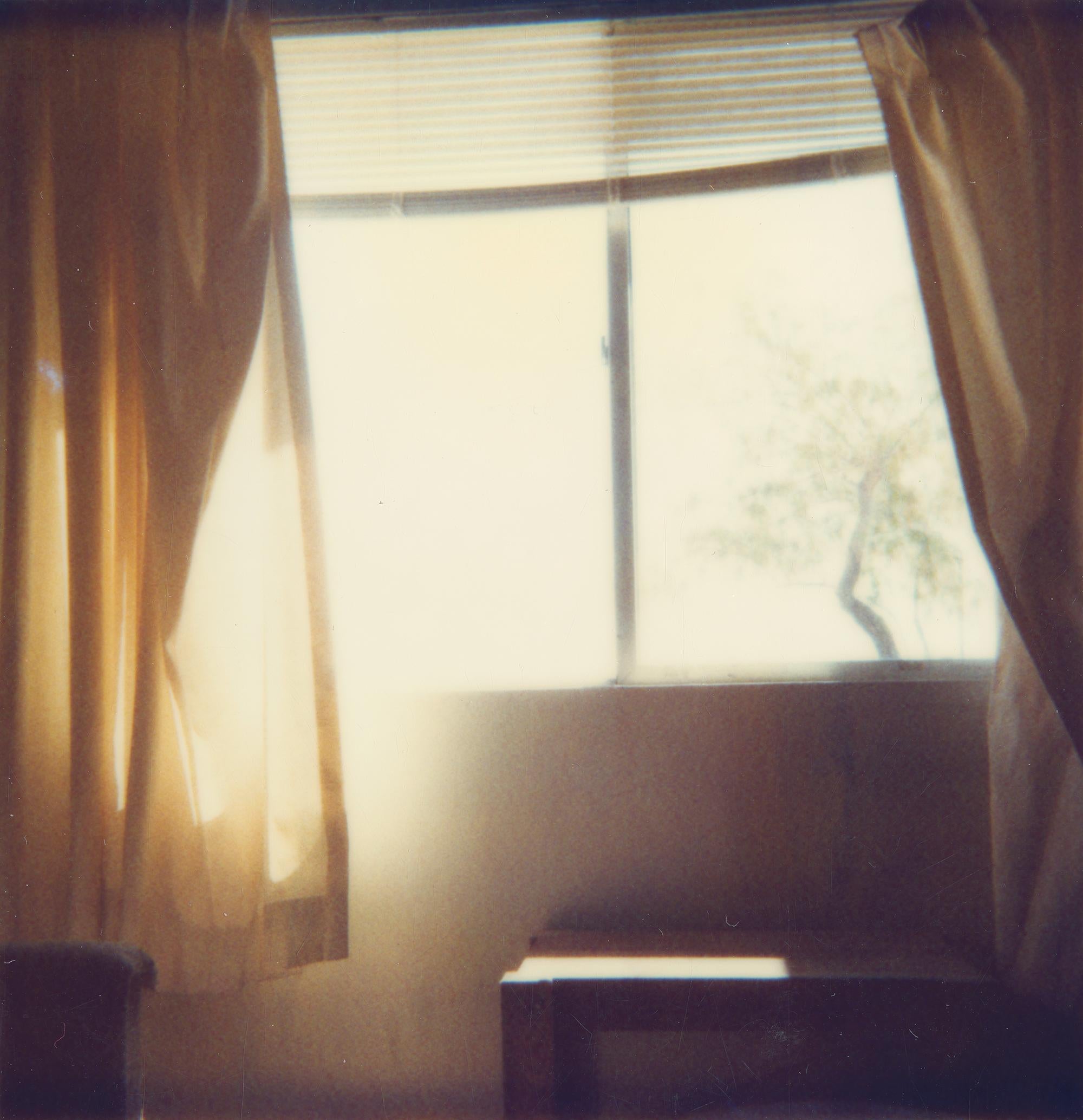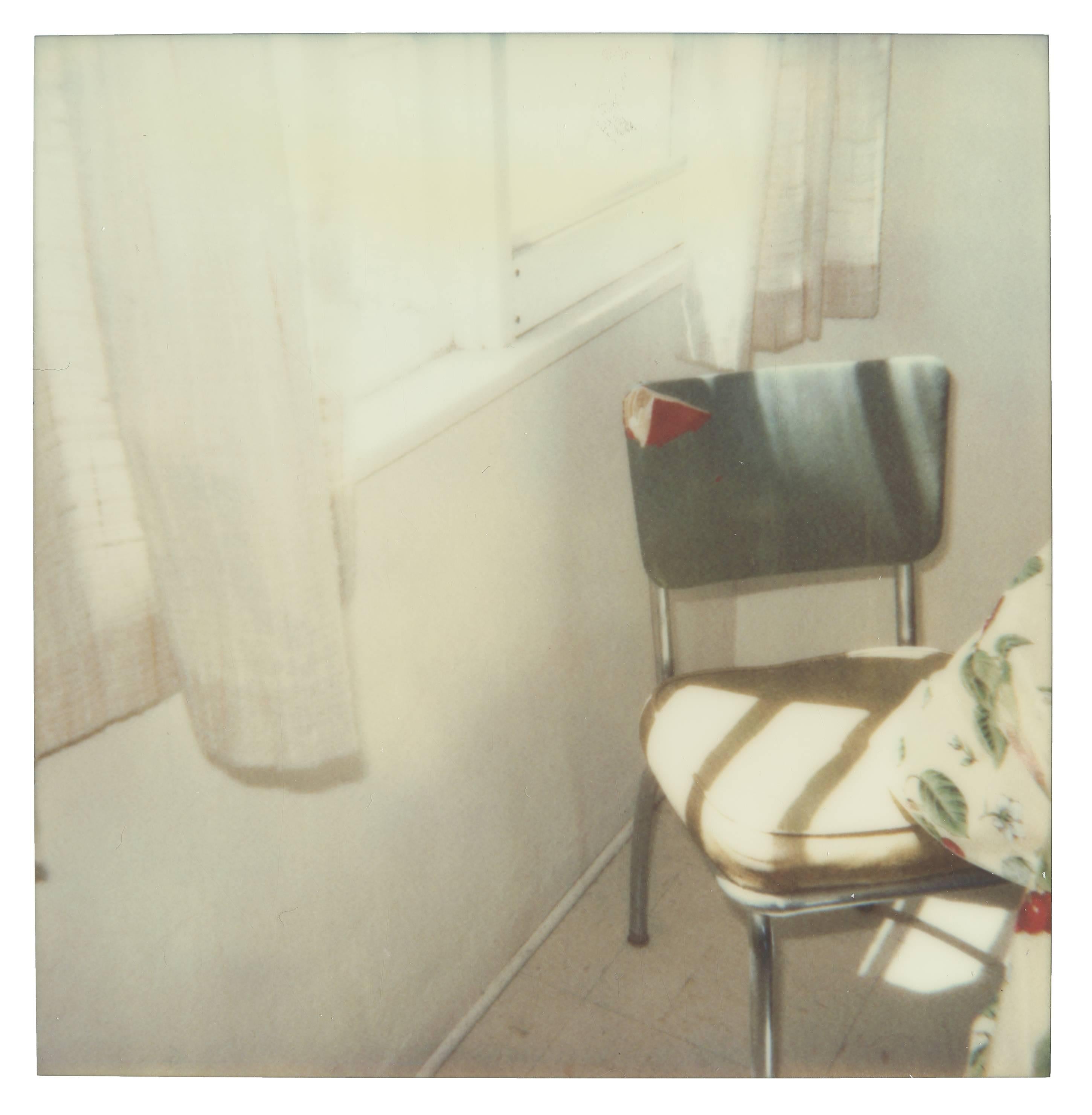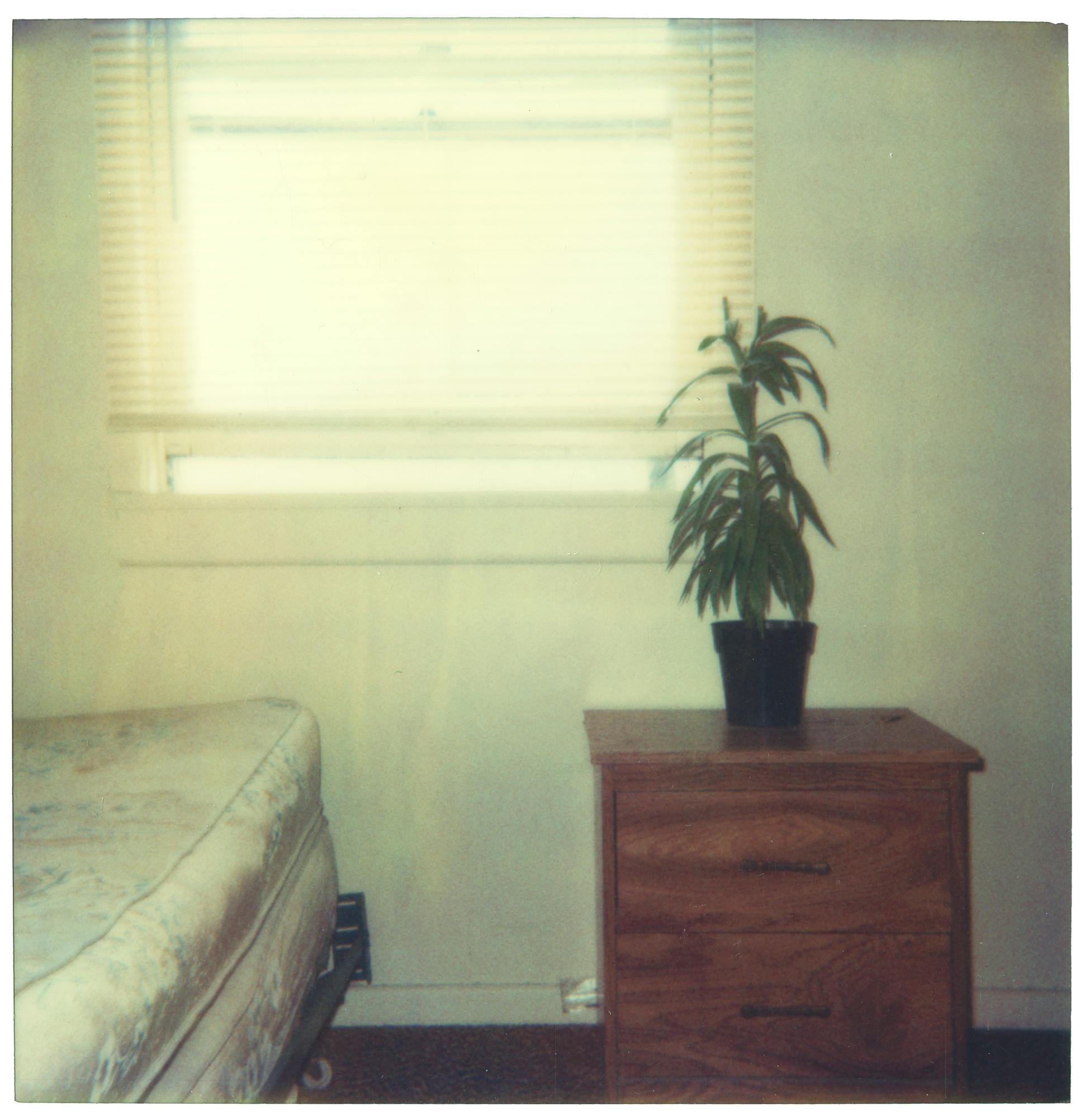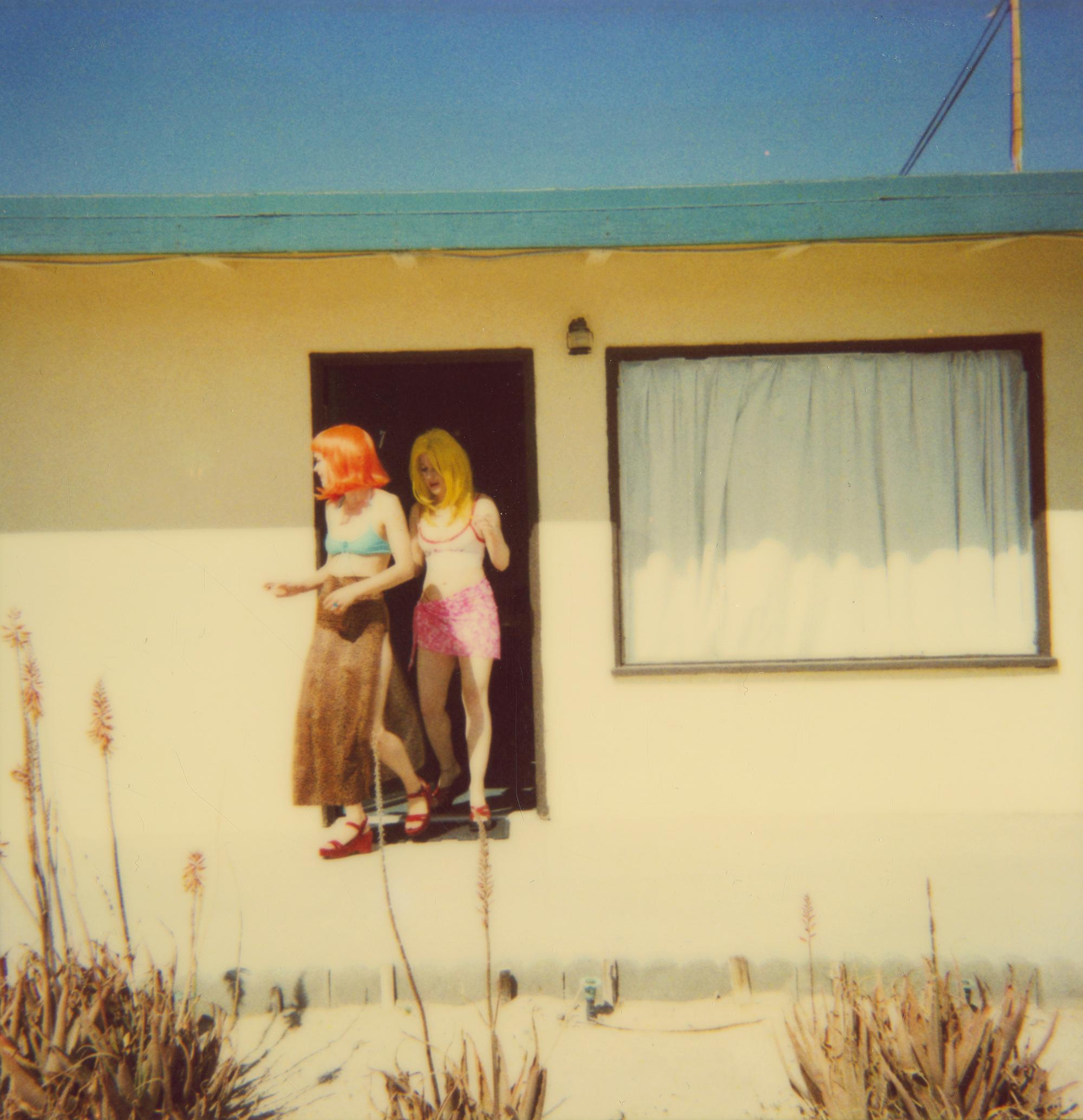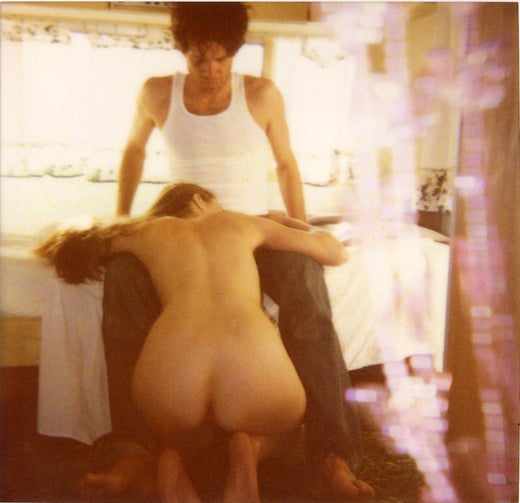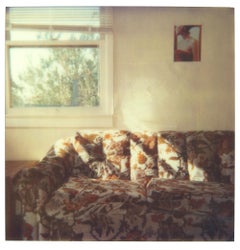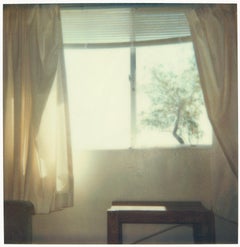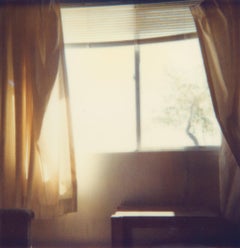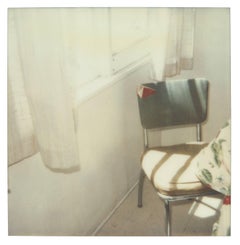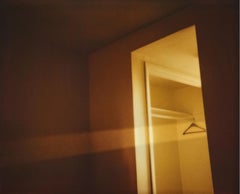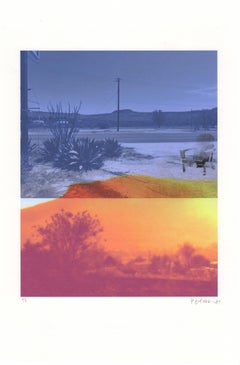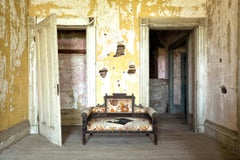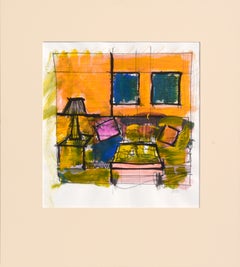Items Similar to Orange Flowered Couch at Sunset (29 Palms, CA) - Polaroid, Contemporary
Want more images or videos?
Request additional images or videos from the seller
1 of 2
Stefanie SchneiderOrange Flowered Couch at Sunset (29 Palms, CA) - Polaroid, Contemporary1999
1999
$359.44
£267.53
€300
CA$492.35
A$547.60
CHF 285.94
MX$6,663.68
NOK 3,651.87
SEK 3,424.81
DKK 2,283.80
Shipping
Retrieving quote...The 1stDibs Promise:
Authenticity Guarantee,
Money-Back Guarantee,
24-Hour Cancellation
About the Item
Orange Flowered Couch at Sunset (29 Palms, CA) - 1999
Edition 1/10,
20x20cm,
Archival C-Print, based on a Polaroid
Artist inventory Number 19762
Not mounted.
Stefanie Schneider: A German view of the American West
The works of Stefanie Schneider evoke Ed Ruscha's obsession with the American experience, the richness of Georgia O'Keefe's deserts and the loneliness of Edward Hopper's haunting paintings. So how exactly did this German photographer become one of the most important artists of the American narrative of the 20th and 21st century?
Born in Germany in 1968, photographer Schneider used to divide her time between Berlin and Los Angeles from the 90's until settling permanently where her process begins in the American West, in locations such as the planes and deserts of Southern California, where she photographs her subjects. In Berlin, Schneider developed and enlarged her works by hand.
This theme of preservation and deterioration is a core part of Schneider's oeuvre. In an interview in October 2014 with Artnet, the artist explained how her own experiences of pain and loss inspire her. ''My work resembles my life: Love, lost and unrequited, leaves its mark in our lives as a senseless pain that has no place in the present.''
''The ex-lover experiences the residues of love as an amputee experiences the sensation of a ghost limb.'' - Stefanie Schneider
Schneider's subjects are often featured in apocalyptic settings: desert planes, trailer parks, oilfields, run-down motels and empty beaches, alone, or if not, not connected with one another. ''It is the tangible experience of ''absence'' that has inspired my work,'' explained Schneider.
Barnebys, May 3rd, 2017
Stefanie Schneider interviewed by Dutch Filmmaker Willem Baptist
When did you first decide to work with Polaroids? Why do Polaroids seem to be so well tuned to our (artistic) senses, perception and minds?
I started using expired Polaroid film in 1996. It has the most beautiful quality and perfectly encapsulates my vision. The colors on one hand, but then the magic moment of witnessing the image appear. Time seems to stand still, and the act of watching the image develop can be shared with the people around you. It captures a moment, which becomes the past so instantly that the decay of time is even more apparent; – it gives the image a certain sentimentality. The Polaroid moment is an original every time. An artifact.
Why use a medium from the past?
For me, analog has always been there in the present. For the new generation, analog is interesting because it's new to them. I understand that people growing up in a digital age will wonder about its usefulness, but it's theirs to recover if they want to. When I first started working with Polaroid, it wasn't the past. It was a partially forgotten medium, but it existed nonetheless. It is mine by choice as there is no substitute for tangible beauty.
Is it imperfect?
The imperfect perfection in a “wabi-sabi” kind of way.
Wabi-sabi (侘寂) represents a comprehensive Japanese world view or aesthetic centered on the acceptance of transience and imperfection. The aesthetic is sometimes described as one of beauty that is imperfect, impermanent, and incomplete.
'If an object or expression can bring about, within us, a sense of serene melancholy and a spiritual longing, then that object could be said to be wabi-sabi'. 'Wabi-sabi nurtures all that is authentic by acknowledging three simple realities: nothing lasts, nothing is finished, and nothing is perfect.'
Is the Polaroid photograph recognizable or even sometimes cliché?
Absolutely! There's something cliché about the way I'm showing the American Dream. I live it myself, trying to find perfection in an imperfect world. Reaching for the horizon. The dream is broken; the cliché tumbles. There are different ways to involve an audience. You could make movies like Harmony Korine's 'Gummo' a masterpiece in my view but which would probably estrange a large part of an audience. A certain film education is a prerequisite. Or you can start with clichés, the audience then feels safe, which lures them into the depth of your world without them even knowing it or understanding where exactly they are being led to. Appealing to emotions and the sub-conscious. Normal, Change, New Normal.
You continually revisit the landscape of the American West in your work. What draws you back to this scene?
Southern California represents a dream to me. The contrast of Northern Germany, where I grew up, to the endless sunshine of Los Angeles was what first attracted me. The American West is my dream of choice. Wide, open spaces give perspectives that articulate emotions and desires. Isolation feeds feelings of freedom or sometimes the pondering of your past. The High Desert of 29 Palms has very clear and vivid light, which is vital. Expired Polaroid film produces 'imperfections' that I would argue mirrors the decline of the American dream. These so called 'imperfections' illustrate the reality of that dream turning into a nightmare. The disintegration of Western society.
Are you playing with the temporality of the material and the value of the moment itself?
The value of the moment is paramount, for it is that moment that you're trying to transform. All material is temporary, it's relative, and time is forever.
Why does analog film feel more pure and intuitive?
It's tangible and bright and represents a single moment.
The digital moment may stay in the box (the hard drive / camera / computer etc.)
forever, never to be touched, or put into a photo album, sent in a letter, or hung on a wall.
Printing makes it an accomplishment.
The analog world is more selective because it's real. Film is a choice.
The digital worldwide clicking destroys this moment. The generation without memories due to information overload and hard drive failures. Photo albums are a thing of the past.
Why does it feel this way?
That's how the human instinct works.
When I was a child, every picture been taken was a special moment. Analog photographic film as well as Super-8 material were expensive treasures. My family's memories were created by choosing certain moments in time. There was an effort behind the picture. The roll of film might wait months inside the camera before it was all used. From there, the film required developing, which took more time, and finally, when the photos were picked up from the shop, the memories were visited again together as a family. Who knew then, how fleeting these times were. Shared memories was a ritual.
What's your philosophy behind the art of Polaroid pictures?
The 'obsolete' is anything but obsolete. Things are not always as they appear, and there are hidden messages. Our memories and our dreams are under-valued. It is there that real learning and understanding begins by opening yourself to different perspectives. Who we are and where we come from is important. A Polaroid is a testimony to our existence. But our time is fading fast.
What inspired you to use stop motion cinematography?
My work has always resembled movie stills. I remember the first time I brought a box of Polaroids and slid them onto Susanne Vielmetter's desk (my first gallery). Instantly, it became apparent that there was a story to tell. The stories grew. It was undeniable to me, that the emerging story was where I was destined to go. I've made four short films before my latest feature film, The Girl behind the White Picket Fence. This film is 60 minutes long with over 4000 edited Polaroids. Remember that our sub-conscious fills in blanks, the parts missing from the story between photograph stills allow a deeper and more personal experience for the viewer. That is, if you surrender yourself and trust me as the director to lead you somewhere you might not have ever been before.
Why do you think it is important to own art?
'We have art in order not to die of the truth'
Nietzsche
Stefanie Schneider's new photographic works tell fantastic stories about her adopted Californian home. She seeks out faded American myths and distils auratically charged reality in a very personal and surprising way. She uses out-of-date Polaroid film, and the blemishes caused by the degenerated film stock, - are included in the composition in a painterly way. Exposure mistakes and low budget movie effects are combined to alienating effect. Everything shimmers and flickers before our eyes. The artist plays with the authentic poetry of the amateur, mixing strangely dreamy staging with random photochemical events. In the 16-part work Frozen, which is characterized by a strangely transcendent mood in the lighting, film-still-like pictorial clusters come together to form a mysterious story, with the artist herself as the lonely protagonist. the aesthetic is reminiscent of early Lynch films. The components of the elliptically choreographed events are scenes from an enchanted, gleaming winter landscape, together with "staged snapshots" of a pale young woman in her underskirts, who radiates the troubled reality of a mirage with her sleep walking presence. The story is presented in the manner of cinematic flashbacks or dream sequences. Stage blood and a knife are used to evoke a crime of passion whose surreal attractiveness is derived from the scenic openess of what is shown. The deliberate use of old instant picture stock establishes in a richly faceted way the ephemeral quality of vulnerability and transience within a reality that is brittle from the outset. The American Stars and Stripes, recently updated as the absolute epitome of a patriotic signifier, is the subject of the 9-part work Primary Colors (2001). Schneider's reassuringly European view, free of undue emotion, presents the Stars and Stripes motif in a strangley alienated form: she shows stills with phases of fluttering violently in the wind, even torn in some cases, and the poor film stock emphazises the fragility of the icon even more.
FlashART - Sabine Dorothee Lehner
(translated from German by Michael Robinson)
- Creator:Stefanie Schneider (1968, German)
- Creation Year:1999
- Dimensions:Height: 7.88 in (20 cm)Width: 7.88 in (20 cm)Depth: 0.04 in (1 mm)
- Medium:
- Movement & Style:
- Period:
- Condition:
- Gallery Location:Morongo Valley, CA
- Reference Number:1stDibs: LU652315557722
Stefanie Schneider
Stefanie Schneider received her MFA in Communication Design at the Folkwang Schule Essen, Germany. Her work has been shown at the Museum for Photography, Braunschweig, Museum für Kommunikation, Berlin, the Institut für Neue Medien, Frankfurt, the Nassauischer Kunstverein, Wiesbaden, Kunstverein Bielefeld, Museum für Moderne Kunst Passau, Les Rencontres d'Arles, Foto -Triennale Esslingen., Bombay Beach Biennale 2018, 2019.
About the Seller
4.9
Platinum Seller
Premium sellers with a 4.7+ rating and 24-hour response times
Established in 1996
1stDibs seller since 2017
1,033 sales on 1stDibs
Typical response time: 2 hours
- ShippingRetrieving quote...Shipping from: Morongo Valley, CA
- Return Policy
Authenticity Guarantee
In the unlikely event there’s an issue with an item’s authenticity, contact us within 1 year for a full refund. DetailsMoney-Back Guarantee
If your item is not as described, is damaged in transit, or does not arrive, contact us within 7 days for a full refund. Details24-Hour Cancellation
You have a 24-hour grace period in which to reconsider your purchase, with no questions asked.Vetted Professional Sellers
Our world-class sellers must adhere to strict standards for service and quality, maintaining the integrity of our listings.Price-Match Guarantee
If you find that a seller listed the same item for a lower price elsewhere, we’ll match it.Trusted Global Delivery
Our best-in-class carrier network provides specialized shipping options worldwide, including custom delivery.More From This Seller
View AllOrange Flowered Couch (29 Palms, CA) - Polaroid, Contemporary
By Stefanie Schneider
Located in Morongo Valley, CA
Orange Flowered Couch (29 Palms, CA) - 1999
50x49cm,
Edition of 10 plus 2 Artist Proofs.
Archival C-Print based on the original Polaroid.
Certificate and signature label.
Artis...
Category
1990s Contemporary Still-life Photography
Materials
Archival Paper, Photographic Paper, C Print, Color, Polaroid
Living Room (29 Palms, CA) - Polaroid, Contemporary
By Stefanie Schneider
Located in Morongo Valley, CA
Living Room (29 Palms, CA) - 1999
58x56cm,
Edition of 10, plus 2 Artist Proofs.
Analog C-Print, hand-printed by the artist, based on the Polaroid.
Signature label and Certificate...
Category
1990s Contemporary Portrait Photography
Materials
Archival Paper, Photographic Paper, C Print, Color, Polaroid
$990 Sale Price
44% Off
Room With A View (29 Palms, CA) - Polaroid, Contemporary
By Stefanie Schneider
Located in Morongo Valley, CA
Room With A View (29 Palms, CA) - 1999
20x20cm,
Edition of 10, plus 2 Artist Proofs.
Archival C-Print, based on the Polaroid.
Signature label and Certificate,
Artist inventory n...
Category
1990s Contemporary Portrait Photography
Materials
Archival Paper, Photographic Paper, C Print, Color, Polaroid
Green Chair - 29 Palms, CA
By Stefanie Schneider
Located in Morongo Valley, CA
Green Chair (29 Palms, CA) - 1999
Edition of 10,
58x56cm,
analog C-Print, hand-printed by the artist, printed on Fuji Crystal Archive Paper
not mounted,
based on the Polaroid
Art...
Category
1990s Contemporary Landscape Photography
Materials
Archival Paper, Photographic Paper, C Print, Color, Polaroid
$1,540 Sale Price
44% Off
Bedroom Plant (29 Palms, CA) - Polaroid, Contemporary
By Stefanie Schneider
Located in Morongo Valley, CA
Bedroom Plant (29 Palms, CA) - 1999
58x56cm,
Edition of 10, plus 2 Artist Proofs.
Analog C-Print, hand-printed by the artist, based on the Polaroid.
Signature label and Certifica...
Category
1990s Contemporary Portrait Photography
Materials
Archival Paper, Photographic Paper, C Print, Color, Polaroid
$990 Sale Price
44% Off
Roommates (29 Palms, CA) - Polaroid, Contemporary
By Stefanie Schneider
Located in Morongo Valley, CA
Roommates (29 Palms, CA) - 1999
20x20cm,
Edition of 10 plus 2 Artist Proofs.
Archival C-Print based on the original Polaroid.
Certificate and signature label.
Artist inventory ...
Category
1990s Contemporary Still-life Photography
Materials
Archival Paper, Photographic Paper, C Print, Color, Polaroid
You May Also Like
Awake Asleep AC – Emma Summerton, Polaroid, Colour, Light, Sunbeam, Hotel room
By Emma Summerton
Located in Zurich, CH
Emma SUMMERTON (*1970, Australia)
Awake Asleep AC, 2008
Archival pigment print on Hahnemühle Paper
100 x 120 cm (39 3/8 x 47 1/4 in.)
Edition of 5, plus 2 AP; Ed. no. 2/5
Print only
Australian born Emma Summerton (*1970) graduated from the National Art School in Sydney, where she studied fine arts majoring in Photography. Summerton moved to London in 1998, where she worked as an assistant to artist Fiona Banner...
Category
Early 2000s Contemporary Color Photography
Materials
Archival Pigment
Price Upon Request
Free Shipping
"Scorched (with Adirondack chair), "Landscape, Desert, Blue, Orange, Monoprint
By Patty deGrandpre
Located in Natick, MA
Patty deGrandpre’s “Scorched (with Adirondack chair) ” is an 11 x 8.875 inch unique inkjet monoprint represented on 16.5 x 11 inch Awagami Bamboo paper embracing both digital printma...
Category
2010s Contemporary Abstract Prints
Materials
Paper, Color, Digital, Monoprint
"Return", Abandoned, Victorian, Sofa, Interior, Yellow, Pink, Photograph, 2022
By Rebecca Skinner
Located in Natick, MA
Rebecca Skinner’s “Return” is a 12 x 18 inch color photograph of a Victorian sofa in the interior of an abandoned building. Peeling paint in pink, yellow and white demonstrate the pa...
Category
2010s Contemporary Color Photography
Materials
Metal
Cubist Living Room Interior Scene in Orange, Green & Blue
By Michael William Eggleston
Located in Soquel, CA
Bright and expressive interior scene in a cubist style with a warm and bright color palette of orange, green, blue, and a pop of magenta, by Michael William Eggleston (American, 20th...
Category
Late 20th Century Cubist Mixed Media
Materials
Paper, Mixed Media, Acrylic, Felt Pen, Color Pencil
Sunset in the Red Room Large Format Photo 24X20 Color Photograph Beach House RI
By Peter C. Jones 1
Located in Surfside, FL
Sunset in the Red Room, The Tappen House, Little Compton, RI (Rhode Island)
Moody photos of a summer vacation house at the beach.
Peter C. Jones is a fine art photographer, docum...
Category
Early 2000s American Modern Color Photography
Materials
C Print
Vegas 16 15– Emma Summerton, Polaroid, Architecture, Motel, Street photography
By Emma Summerton
Located in Zurich, CH
Emma SUMMERTON (*1970, Australia)
Vegas 16 15, 2007
Archival pigment print on Hahnemühle Paper
100 x 120 cm (39 3/8 x 47 1/4 in.)
Edition of 5, plus 2 AP; Ed. no. 2/5
Print only
Australian born Emma Summerton (*1970) graduated from the National Art School in Sydney, where she studied fine arts majoring in Photography. Summerton moved to London in 1998, where she worked as an assistant to artist Fiona Banner...
Category
Early 2000s Contemporary Color Photography
Materials
Archival Pigment
Price Upon Request
Free Shipping
More Ways To Browse
Early American Sofa
Space Watch Vintage
Used Couches Los Angeles
Vintage Beach Girls
Dior Stripe
Michael Childers
Large Sofa Mirror
1968 Vintage Watch
Stars And Stripes Vintage
Japanese Vintage Plane
Vintage Stripe Sofa
Vintage Dior Watch
Poor Box
Poor Things
Wabi Sabi Sofa
New Old Stock Vintage Watch
Ghost Watch
Vintage Computer Case
